
Review on Planar PX2230MW Touchscreen LCD Monitor: Advanced 9.0 248mm 1920x1080 Display, Model 997-5983-00 by Leo Hamilton

Great monitor for "normal " touch applications.
. But not for anything that requires pixel-level precision. To do this, buy a Wacom tablet.* Duration of ownership/use: 3 years* Technical understanding of the devices used: VERY HIGH. I have many touchscreens on a variety of devices, and I carefully research the technology behind each monitor before I buy one.* How I use this monitor: As a complement to programs on it that use medium to large sized buttons. Things like task managers, web browsers, music players, remote control programs for the game server I host. I sometimes change it to my primary monitor when I need to do something that requires more "physical contact" with the program content. ---------- ----- My personal take on this monitor (skip this to "key points" if you just want the facts "without" personal experience): As I already said said, I use this monitor as a secondary. I originally bought this as my main monitor and it lasted about a year and a half. I only moved it to a secondary position when I bought a newer high performance monitor with better gaming abilities as I do less professional photography than I used to. Operating system support and driver support are good. Windows Vista/7 automatically loads its own internal multi-touch drivers and provides good calibration tools. Windows XP can use it, but only in one-touch mode, and recognizes it as a standard mouse, not a touchscreen. Linux also only reads it as a pure mouse device. I've never tried using it on a Mac since I don't have one, but I think it will at least boot up like a standard mouse. The picture quality is bright, razor sharp, clean and has excellent colour/contrast rendition. . Working with videos and photos is the main focus of these monitors and it works well in this capacity. However, the touchscreen is NOT USEFUL for image editing, unless you limit yourself to drawing. Other than that, the touchscreen works great when you just need to press the onscreen buttons or move elements around the screen. Just be very careful when touching the top right corner, as the accuracy in the corners will drop and you might close something you haven't saved yet. Calibration is done through Windows (or whatever operating system you use). Just to be clear: NO calibration will solve the problem of inaccuracy in the corners and at the very edges. It also won't solve the "two finger alignment" problem. These are problems inherent in almost all optical touch screens. However, when you learn to peer around the corners and edges and observe what's actually happening on the screen when you use two fingers, those problems really add up compared to the many useful things you can do with that touch small amount. Screen. Personally, I'm glad I have this monitor simply because it allows me to physically organize my windows and icons on the screen. Rearranging objects on the screen with your hands comes naturally. Conclusion: An uncomplicated utility-level touchscreen with photographic image quality. Buy it if you want a good consumer photo editing monitor with added touchscreen capabilities. BUT, if you want to use it for a touch desktop that requires a high level of precision, this monitor probably isn't for you. -------------------- --------Highlights: Advantages: * Excellent image quality, good contrast with excellent color reproduction, of course AFTER proper calibration. (Always calibrate your monitor before taking professional photos!)* Multi-touch works great despite some limitations.* Stylus included for more precise use.* Correct VESA mounting points.* Good driver support from XP-W7. Automatically starts up as a regular mouse for compatibility with devices that don't support certain multi-touch hardware drivers but support only one touch in this mode. (e.g. Windows XP or Linux)* Full support for 1920 x 1080 x 48-bit at 75 Hz via a dual-link DVI-I cable. Remember that DVI-I is the best type of DVI connection as it combines both analogue and digital signals in the same dual-link connection, offering the best compatibility options with the best possible picture quality. However, it depends on the cable you use, as cheaper cables only support 24-bit color. To ensure you're using the best cable (and therefore the best picture quality), make sure you have all the pins on each end. If half of the pins appear to be missing compared to the pin holes on the monitor's DVI connector, the cable is single link and the picture quality will be poor. Cons: * Poor accuracy in the corners or at the very edge of the screen, even with a stylus. This makes it difficult to press the right button when minimizing/maximizing/exiting "X" from the program. Therefore, accidentally closing a program without saving the current file is a real risk. * The VGA connector has become unusable as the monitor information is not sent to the computer and therefore only standard resolutions (not the maximum resolution) are supported over VGA. * Still works if necessary! **Optical multi-touch technology is a poor substitute for capacitive (e.g. an iPad-style touchscreen), and even a hard touchscreen can achieve greater accuracy. * Multi-touch with infrared optical tracking has some strange bugs when using two fingers. For example, if you sometimes draw two lines with two fingers while drawing, the optical sensors on the edges will get confused if your fingers are aligned vertically or horizontally and either swap the lines drawn between the two fingers or stop drawing one of them. This "finger alignment" issue affects zooming and all other actions involving two or more fingers. * A dead pixel on the one I received. The pixel is only a third dead, meaning the blue and green channels are fine, but the red on that one pixel is toasted and barely noticeable. * No HDMI port. no real critic as it's intended to be used as a professional work tool where HDMI shouldn't be used, but it's always a nice addition. (You must use a lossless signal such as DVI-I, which this monitor supports, especially if you are using it for photo or video work.) Hope all of this helps you make an informed decision!
- Nice
- Can hurt
New products
Comments (0)
Top products in 🖥 Monitors
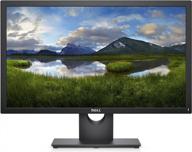
Dell E2318Hx LED Lit Monitor: High-Definition Display with Flicker-Free Technology and IPS Panel

109 Review
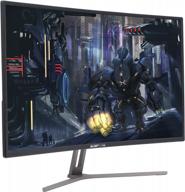
Sceptre C325B-144R: Advanced FreeSync HD Display with Wall Mounting and Tilt Adjustment

94 Review
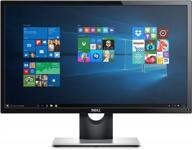
Dell SE2416HX Screen LED Lit Monitor 23.8", 1920X1080P, HDMI

93 Review
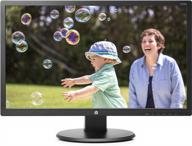
HP 24Uh 24" Backlit Monitor 1920x1080p, 60Hz, LCD with HD Resolution - K5A38AA#ABA

101 Review
Another interesting products
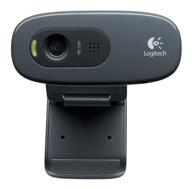
Logitech HD Webcam C270: Crisp 720p Widescreen Video Calling & Recording (960-000694), Lightweight and Portable at 3.15 lb.

192 Review
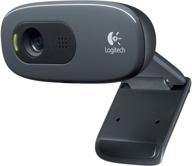
Enhance Your Visual Experience with Logitech C260 Webcam

78 Review
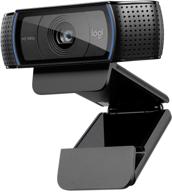
💻 Get Amazing Video Quality with Logitech HD Pro Webcam C920 (Discontinued Edition)

83 Review

Renewed Logitech G PRO X Wireless Lightspeed Gaming Headset with Blue VO!CE Mic Filter for Immersive Gaming Experience

122 Review

